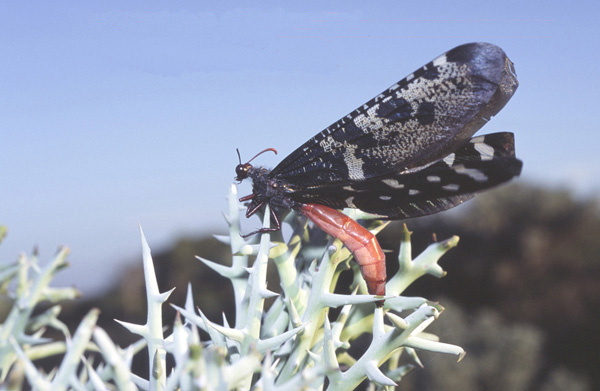Madagascar Myrmeleontidae

The Myrmeleontidae, or antlions, are the largest neuropterans and the most speciose. More than 1200 species have been described from all temperate and tropical parts of the world. They appear to be most abundant in warm, dry areas such as deserts, but can be found in such habitats as forests, in tree holes, and in caves. Adults have long wings and have often been compared to dragonflies or damselflies, although there is no close relationship between the two groups. Often adults are attracted to lights at night, but there are many less obvious species that are not attracted to lights. A few of the more colorful species are diurnal. Larvae are rounded to elongate predators with massive mandibles for capturing prey. The larval mandibles usually have three teeth and can be as long as the body itself. The species that most people are familiar with have larvae that form funnels in the sand live at the bottom of the funnel. However, many more species live on tree trunks, in tree holes, caves, on rock surfaces, or lie in wait at the soil surface, often under leaves and other detritus. Some larvae move actively just under the soil surface creating apparent random trails. These species are called doodle-bugs. The current classification of Stange (2004) places the antlions into five subfamilies (two of them known only from fossils) and 14 tribes.The Madagascar antlion fauna is relatively rich with two subfamilies, six tribes, and approximately 50 species. They can be identified using the keys to subfamilies, tribes, subtribes and genera in Stange (2004) and the diagnoses and photos contained herein.
|
||||||||||||||||||||||
|---|---|---|---|---|---|---|---|---|---|---|---|---|---|---|---|---|---|---|---|---|---|---|